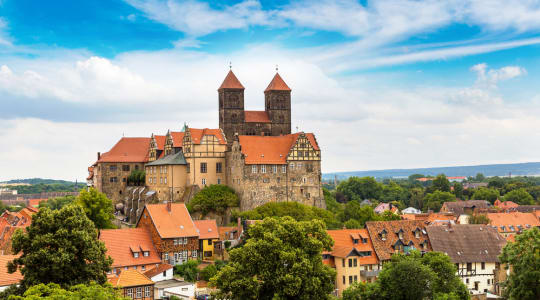
Quedlinburg Abbey is a former Benedictine abbey located in the town of Quedlinburg, in the Harz Mountains of central Germany. The abbey was founded in 936 by King Otto I and his wife, Queen Editha, and it played an important role in the history of the Holy Roman Empire.
The abbey complex includes a number of buildings, including the Romanesque collegiate church of St. Servatius, which dates back to the 11th century. The church features a number of notable architectural features, including its crypt, which contains the remains of St. Servatius and other important figures from the abbey's history.
The abbey also includes a number of other buildings, including a Romanesque cloister, a Gothic chapel, and a Renaissance palace that was built in the 16th century. The palace served as a residence for the abbesses of Quedlinburg and is now home to a museum that showcases the history of the abbey and the town.
In 1994, Quedlinburg Abbey was designated a UNESCO World Heritage Site for its outstanding architecture and historical significance. Today, the abbey continues to be an important cultural and religious center, with regular church services and cultural events taking place throughout the year.
Explore Near Quedlinburg Abbey
Discover 2 attractions and 5 cities within 75km. Perfect for planning day trips, finding connecting flights, or discovering new destinations to explore during your visit.
Nearby Attractions & Places to Visit
2 destinations within 4.9km - 50.4km from your location


Nearby Cities Worth Exploring
5 destinations within 51.2km - 67.3km from your location
Cross-Border Adventures Near Quedlinburg Abbey
Discover cross-border adventures near Quedlinburg Abbey. Explore neighboring countries with similar attractions and extend your travel experience across borders.








And 1 more neighboring countries